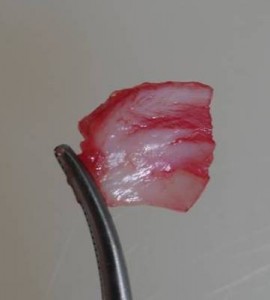Rupture of the cranial cruciate ligament in the stifle (knee) joint is a very common problem in dogs.
Placing a permanent nylon suture when the cranial cruciate ligament fails is still a widely performed procedure. However, in recent years various osteotomy (bone cutting) procedures like tibial tuberosity advancement (TTA), tibial plateau levelling osteotomy (TPLO) and their variants and combinations have been widely used.
At West Midlands Veterinary Referrals, we prefer the osteotomy procedures for larger dogs as they get mobile faster with these osteotomy techniques. There is no clear evidence that the long-term outcome, months down the line, is much different.
In small, quiet dogs where a period of a few weeks conservative treatment (rest, anti-inflammatories etc) has proved ineffective, we still find the LRS to be a very useful technique in many of these patients.
A nylon suture of the leader line (which will be a familiar material to fishermen) is placed around the lateral fabella, a reasonably firm anchor point just behind the femur and just above the stifle. This suture is passed through a bone tunnel created in the tibia. The positioning of this tunnel is important and easy to get wrong. Accurate positioning of the tunnel ensures that the line of the suture will be best suited to constrain the aberrant motion of the stifle, which results when the cranial cruciate ligament is ruptured. The suture is pulled snugly and secured with a metal crimp.
The aftercare for LRS surgeries is slightly longer than for osteotomy techniques. Fact sheets for both of these procedures can be found in the section for owners.





